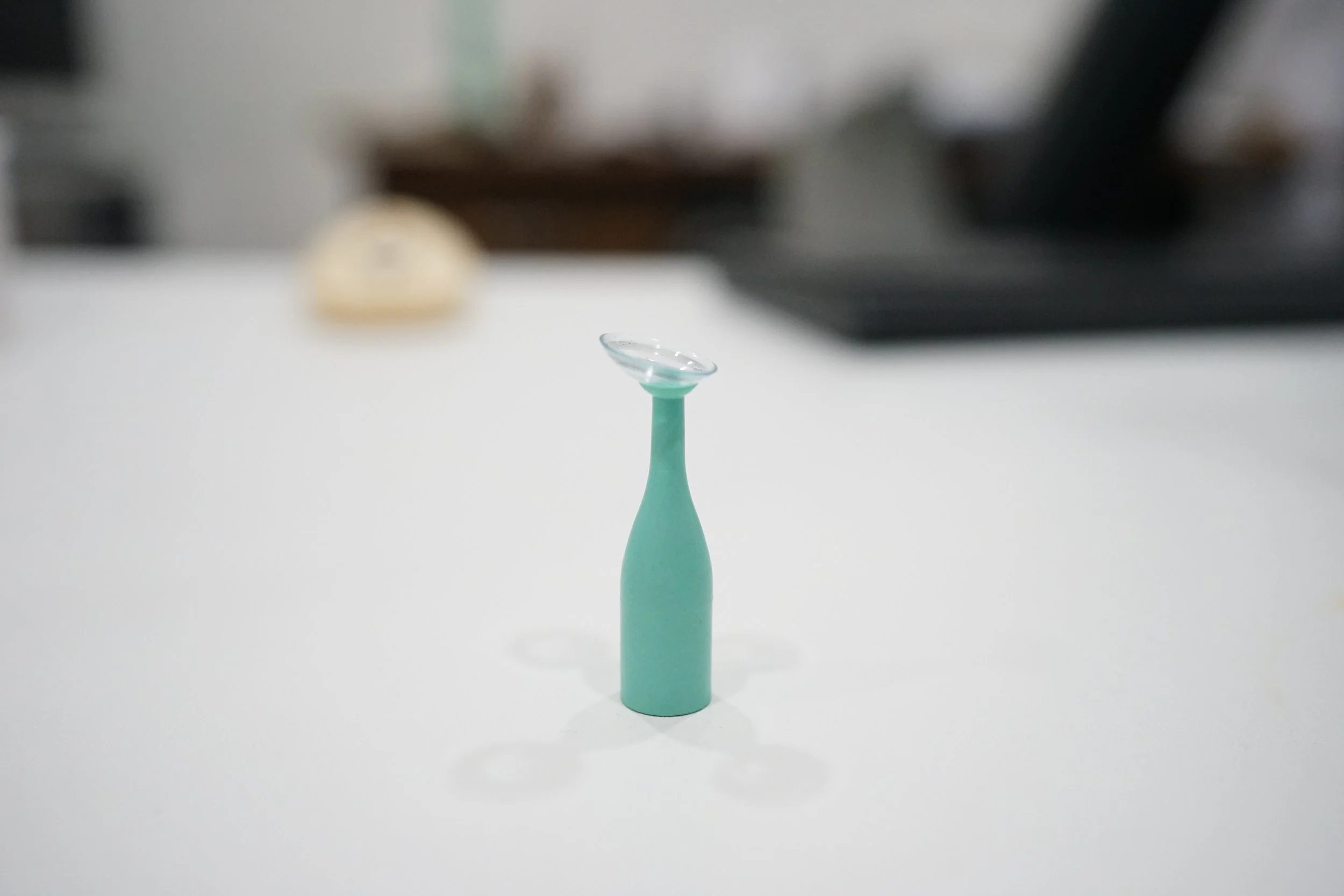What Is a Scleral Lens?:
A Simple Guide for Patients with Keratoconus or Severe Dry Eyes
If you’ve been diagnosed with keratoconus, severe dry eye, or another corneal condition, your doctor may have recommended something called a scleral lens. But what exactly is it, and how can it help?
Let’s explain it in simple terms.
A Scleral Lens Is Not Like a Regular Contact Lens
Most contact lenses sit directly on the cornea, which is the clear front surface of your eye. A scleral lens is larger and rests gently on the white part of your eye, called the sclera. It creates a clear space over the cornea, which fills with sterile saline and stays there while you wear the lens.
This cushion of fluid protects your eye and helps provide crisp, stable vision.
(Source: Jacobs DS et al., Medical use of contact lenses, Contact Lens and Anterior Eye, 2021)
Why Are Scleral Lenses Good for Keratoconus?
Keratoconus causes the normally round cornea to thin and bulge into a cone shape. Glasses and soft lenses often struggle to correct vision in these cases. A scleral lens smooths over the irregular surface, giving you much clearer and more stable vision.
Even for advanced keratoconus, scleral lenses can dramatically improve visual quality.
(Source: van der Worp E., A Guide to Scleral Lens Fitting, Pacific University, 2015)
They’re Surprisingly Comfortable
Although they are larger and firmer than typical lenses, scleral lenses are known for comfort. That’s because they don’t touch the sensitive cornea. Once fitted properly, most wearers adjust quickly and comfortably.
(Source: Wolffsohn JS et al., Contact Lens Evidence-Based Academic Reports (CLEAR), 2021)
Relief for Severe Dry Eyes
If you suffer from chronic dry eyes, especially due to conditions like Sjögren’s syndrome or graft-versus-host disease, a scleral lens can feel life-changing. The fluid reservoir created by the lens bathes the eye all day, helping to relieve dryness, irritation, and redness.
This is why scleral lenses are often used for patients recovering from eye surgeries or with damage to the cornea.
(Source: Jacobs DS et al., 2021; Willcox MD et al., Wettability and disinfection, 2021)
Are They Safe?
Scleral lenses are very safe when used correctly. Most complications are minor and avoidable with proper hygiene and regular checkups. Common issues include occasional lens fogging or the need for refitting, especially early on.
(Source: Stapleton F et al., Contact lens complications, 2021)
Who Can Benefit from Scleral Lenses?
You may be a good candidate if you have:
Keratoconus or pellucid marginal degeneration
Post-LASIK ectasia
A corneal transplant
Stevens-Johnson syndrome
Graft-versus-host disease (GVHD)
Severe dry eye that hasn’t improved with drops
Chronic allergic eye disease
(Source: Jacobs DS et al., 2021; van der Worp E., 2015)
In conclusion
Scleral lenses aren’t just vision correction devices. They’re therapeutic tools that can protect your eye, improve comfort, and restore vision in ways glasses or soft lenses often can’t. Whether you’re dealing with blurry vision from keratoconus or painful dry eyes, a scleral lens may be the solution you’ve been looking for.
Talk to your eye doctor to see if scleral lenses are right for you. Clear, comfortable vision is possible—sometimes all it takes is the right kind of lens.
References
Jacobs DS, Carrasquillo KG, et al. Medical use of contact lenses. Contact Lens and Anterior Eye. 2021;44(3):289–329.
van der Worp E. A Guide to Scleral Lens Fitting. Pacific University; 2015.
Wolffsohn JS, Morgan PB, et al. Contact Lens Evidence-Based Academic Reports (CLEAR). Contact Lens and Anterior Eye. 2021;44(2):129–131.
Willcox MD, Keir N, et al. Wettability, cleaning, and disinfection. Contact Lens and Anterior Eye. 2021;44(2):157–191.
Stapleton F, Bakkar M, et al. Contact lens complications. Contact Lens and Anterior Eye. 2021;44(2):330–367.




